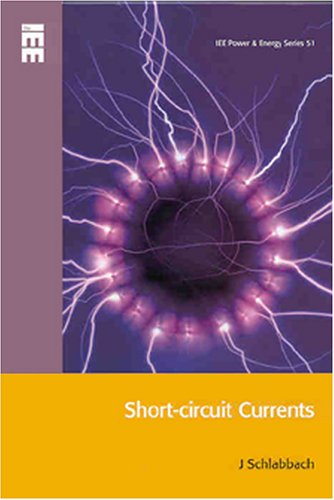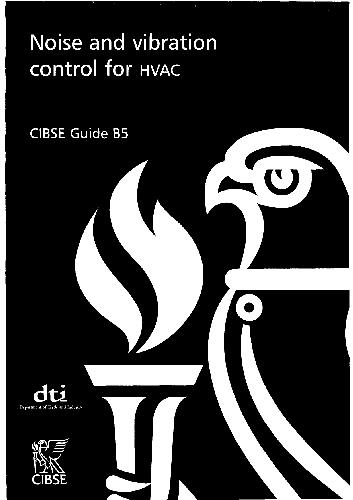| Book Name: | Power System Dynamics with Computer-Based Modeling and Analysis |
| Language: | English |
| Format: | |
| Free Download: | Available |
Power System Dynamics with Computer-Based Modeling and Analysis by Yoshihide Hase, Tanuj Khandelwal, and Kazuyuki Kameda | PDF Free Download.
| Book Details : | |
|---|---|
| Language | English |
| Pages | 1125 |
| Format | |
| Size | 62.6 MB |
Power System Dynamics with Computer-Based Modeling and Analysis
Authors of Power System Dynamics with Computer-Based
Yoshihide Hase was born in Gifu Prefecture, Japan, in 1937. After graduating in electrical engineering from Kyoto University, he joined the Toshiba Corporation in 1960 and took charge of various power system projects, both at home and abroad, including the engineering of generating station equipment, substation equipment, as well as power system control and protection, until 1996.
During that time, he held the positions of general manager, a senior executive of technology for the energy systems sector, and chief fellow.
In 1996, he joined Showa Electric Wire & Cable Company as the senior managing director and representative director and served on the board for eight years.
He was a lecturer at Kokushikan University for five years from 2004. He was the vice president of the IEEJ (1995–1996) and has been bestowed as an honorary member.
He was also the representative office of the Japanese National Committee of CIGRE (1987–1996) and has been bestowed as a distinguished member of CIGRE. He is also a member of the Institute of Electrical and Electronics Engineers (IEEE).
Tanuj Khandelwal was born in Mumbai, India, in 1977. After graduating with his bachelor of engineering from the University of Mumbai in 1995 with an emphasis on electronics and telecommunications,
He completed his master of science in electrical engineering in 2001 from California State University, Long Beach, USA. He joined ETAP thereafter and is responsible for software research and development and engineering consulting projects,
And he has conducted numerous power system analyses for industrial, renewable, commercial, and utility power systems. He is currently chief technology officer (CTO) at ETAP and a senior Institute of Electrical and Electronics Engineers (IEEE) member.
Kazuyuki Kameda was born in Tochigi Prefecture, Japan, in 1947. After graduating in electrical engineering from Gunma Technical College, he joined the Toyo Engineering Corporation in 1968 and took charge of engineering and construction for various chemical plants and power system projects worldwide.
In 1989, he established Eltechs Engineering and Consulting Co., Ltd., which executed power system engineering and power system analyses. He currently serves in sales and marketing at ETAP as a representative of OTI (Operation Technology, Inc.) in Japan.
Power System Dynamics Contents
Part A Power Systems Theories and Practices
- Essentials of Electromagnetism
- Complex Number Notation (Symbolic Method) and the Laplace Transform
- Transmission Line Matrices and Symmetrical Components
- Physics of Transmission Lines and Line Constants
- The Per-Unit Method
- Transformer Modeling
- Fault Analysis Based on Symmetrical Components
- Fault Analysis with the αβ0-Method
- Power Cables
- Synchronous Generators, Part 1: Circuit Theory
- Synchronous Generators, Part 2: Characteristics of Machinery
- Steady-State, Transient, and Dynamic Stability
- Induction Generators and Motors (Induction Machines)
- Directional Distance Relays and R–X Diagrams
- Lightning and Switching Surge Phenomena and Breaker Switching
- Overvoltage Phenomena
- Insulation Coordination
- Harmonics and Waveform Distortion Phenomena
- Power Electronic Applications, Part 1: Devices
- Power Electronics Applications, Part 2: Circuit Theory
- Power Electronics Applications, Part 3: Control Theory
Part B Digital Computation Theories
- Digital Computation Basics
- Power-Flow Methods
- Short-Circuit Methods
- Harmonics
- Reliability
- Numerical Integration Methods
- Optimization
Part C Analytical Practices and Examples using ETAP
- Introduction to Power System Analysis
- One-Line Diagrams
- Load Flow
- Short-Circuit/Fault Analysis
- Motor Starting
- Harmonics
- Transient Stability
- Reliability Assessment
- Protective Device Coordination
Preface to Power System Dynamics with Computer-Based PDF
In the last three decades of the twentieth century, most analytical engineering calculations were specialized tasks and were usually conducted by full-time power system experts who were familiar with mainframe and general-purpose computers such as IBM PCs.
Circumstances have changed rapidly in the past two decades of the twenty-first century. We are now living in an era when anyone can learn and conduct engineering simulations at their desk using powerful computers and sophisticated engineering software platforms. The rapid changes in the electrical power engineering discipline are no exception.
Many engineers conducting simulations have unrelated expertise and spend most of their time working on different engineering activities.
Their background may be mechanical engineering, computers, civil engineering, physics, or mathematics instead of electrical engineering.
However, they are able to conduct analytical tasks by themselves at their desks as needed, because easy-to-use analytical platforms are available as desktop applications.
In addition, the capabilities of electrical application platforms have expanded far beyond just performing calculations: now they can perform a variety of engineering work.
ETAP, as a typical example of the prevailing worldwide power system analytical engineering platforms, has been utilized by electrical power engineers with various expertise as a robust, multipurpose, essential engineering support tool and even as a powerful communication tool in the fields of commercial businesses and engineering societies.
However, a powerful engineering tool is not a magic box. Essential factors required for a good power engineer are good background knowledge with regard to power system behavior and engineering practices, as well as a high level of skill to utilize engineering tools to maximum effect.
In its 37 chapters, divided into three parts, this book brings together critical contributions from international engineers and researchers to provide an outstanding balance of power system engineering theory, simulation, and practical applications that can motivate the reader to simulate electrical systems rather than to perform analysis.
Part A of the book covers power systems background theories and practices, Part B discusses power circuit computation theories for power systems, and Part C demonstrates how to utilize computation platforms in order to perform effective simulation and analysis.
This book is intended for students in electrical and other engineering disciplines. In addition, it was designed to be useful as a reference and self-study guide for the professional dealing with electrical energy systems.
The book’s broad coverage together with the practical use of computer-based power system analysis makes it ideal for use in a number of ways, including service courses taught to non-electrical engineering majors.
The organization and details of the material in this book should enable instructors to select topics to include in courses within the modern engineering curriculum with sufficient flexibility.
Part A, “Power Systems Theories and Practices,” is a revision of Handbook of Power Systems Engineering with Power Electronics Applications, second ed., by Yoshihide Hase, published in 2013 by Wiley.
The original book’s 28 chapters have been totally revised and recast into new 21 chapters, including additional new content.
The following is from the preface for the original book: This book deals with the art and science of power systems engineering for those engineers who work in electricity-related industries such as power utilities, manufacturing enterprises, engineering companies, or for students of electrical engineering in universities and colleges.
Each engineer’s relationship with power system engineering is extremely varied, depending on the types of companies they work for and their positions.
We expect readers to study the characteristics of power systems theory as a multi-dimensional concept by means of this book, regardless of readers’ business roles or specialties We have endeavored to deal with the following three points as major features of the book:
First, the book covers the theories of several subsystems, such as generating plants, transmission lines and substations, total network control, equipment-based local control, protection, and so on, as well as phenomena ranging from power (fundamental) frequency to lightning and switching surges, as the integrally unified art and science of power systems.
Any equipment in a power system network plays its role by closely linking with all other equipment, and any theory, technology, or phenomenon of one power system is only a viewpoint of the profound dynamic behavior of the system.
This is the reason why we have covered different categories of theories combined in a single hierarchy in this book. Secondly, readers can learn about the essential dynamics of power systems mostly through mathematical approaches.
We explain our approach by starting from physically understandable equations and then move on to the final solutions that illustrate actual phenomena, and never skip explanations or adopt half-measures in the derivations.
Thirdly, the book deals with scientific theories of power system networks that will essentially never change. We intentionally excluded descriptions of advanced technologies, expecting such technologies to continue to advance year by year.
In this book, most of the theoretical explanation is based on typical simple circuits with one or two generators and one or two transmission lines.
A precise understanding of the phenomena in such simple systems must always be the basis of understanding actual large systems and the incidents that may occur on them.
Once the reader has a firm grasp of theoretical power system concepts and a good understanding of electrical energy components,
Part B of this book (Chapters 22–28) should be referenced to learn about the use of component models and efficient computational techniques in the development of computer programs representing the steady and dynamic states of electrical power systems.
Note that power systems are a very diverse field, and multiple books delve into the complex math associated with numerical methods.
The authors have tried to present adequate numerical computation methods and their overall usage in order to prepare readers to arm themselves with sufficient understanding before tackling power systems analysis using computer-based software.
Some basic knowledge of power system theory, matrix analysis, and electrical engineering laws is presented. After the introduction of various numerical methods, specific method applications are discussed for power flow, short-circuit, harmonics, and reliability analysis.
Part C (Chapters 29–37) combines knowledge from Part A and Part B to demonstrate in a practical manner the use of a sophisticated and user-friendly power system analysis software platform:
The electrical Transient Analyzer Program (ETAP) was designed and developed by Operation Technology, Inc., Irvine, CA, USA. ETAP is a handy tool for solving numerical problems with a large number of buses from commercial power systems all the way to utility electrical networks.
Part C includes new benchmark examples from industrial, renewable, and utility power systems to illustrate best practices for engineers to conduct power system analysis.
Keeping in mind current developments and future requirements, the book has a planned preference toward computer simulation of power systems and the application of ETAP for analyses and solutions of complex problems.
The information in Part C integrates, through examples, several hand calculations that are solved later by ETAP to illustrate the differences between estimated/shorthand calculations as well as solutions to practical problems and mitigation techniques.
This will help readers comprehend the ETAP solutions to practical problems and encourage them to modify and even develop their own simulation results.
The reader is strongly encouraged to read the ETAP user guide for additional information on program options that are not replicated in this book.
While the explanations of Part C and Part B are based on ETAP, they are also good references for readers who utilize other, similar platforms.
Part A was drafted by Yoshihide Hase, Part B, and Part C was drafted by Tanuj Khandelwal, and the Part C industry benchmark examples were drafted and solved by Kazuyuki Kameda.
The authors strongly hope that young engineers in the field study this book and use it to contribute to society’s future.
The book contains a large volume of pages, but it is just the tip of the iceberg; a considerable amount of material was left on the proverbial cutting-room floor.
In conclusion, the objective in writing this text and the accompanying ETAP package was to provide a student-oriented, comprehensive, and up-to-date reference book, with consistent notation and necessary detailed explanation at the level for which it is intended.
Should a second edition be required, the authors would be grateful to receive your comments and any suggestions for improvements on any aspect of this book.
Power System Dynamics with Computer-Based Modeling and Analysis PDF
Author(s): Yoshihide Hase; Tanuj Khandelwal; Kazuyuki Kameda
Publisher: Wiley, Year: 2020
ISBN: 1119487455,9781119487456
Download Power System Dynamics with Computer-Based Modeling and Analysis in PDF Format For Free.
Related More Books
See More POST On : Engineering Books









![[PDF] Draw Buildings and Cities in 15 Minutes Draw Buildings and Cities in 15 Minutes pdf](https://www.freepdfbook.com/wp-content/uploads/2021/06/Draw-Buildings-and-Cities-in-15-Minutes-218x150.jpg)








![[PDF] Digital Image Processing An Algorithmic Introduction Using Java Digital Image Processing An Algorithmic Introduction Using Java](https://www.freepdfbook.com/wp-content/uploads/2022/06/Digital-Image-Processing-An-Algorithmic-Introduction-Using-Java.jpg)




![[PDF] 43 Years JEE ADVANCED + JEE MAIN Chapterwise & Topicwise Solved Papers 43 Years JEE ADVANCED (1978-2020) + JEE MAIN Chapterwise & Topicwise Solved Papers Physics PDF](https://www.freepdfbook.com/wp-content/uploads/2022/03/43-Years-JEE-ADVANCED-1978-2020.jpg)

![[PDF] Problems in Physical Chemistry for JEE (Main & Advanced) Problems in Physical Chemistry for JEE (Main & Advanced) Free PDF Book Download](https://www.freepdfbook.com/wp-content/uploads/2022/03/Problems-in-Physical-Chemistry-for-JEE-Main-Advanced.jpg)
![[PDF] Engineering Physics (McGraw Hill)](https://www.freepdfbook.com/wp-content/uploads/2021/05/bafc8c2685bb6823a9c56134f7fba5df.jpeg)

![[PDF] Engineering Chemistry By Shashi Chawla](https://www.freepdfbook.com/wp-content/uploads/2022/05/Theory-And-Practicals-of-Engineering-Chemistry-By-Shashi-Chawla-free-pdf-book.jpeg)
![[PDF] Chemistry: An Introduction to Organic, Inorganic & Physical Chemistry Chemistry: An Introduction to Organic, Inorganic & Physical Chemistry](https://www.freepdfbook.com/wp-content/uploads/2022/04/Chemistry-An-Introduction-to-Organic-Inorganic-Physical-Chemistry.jpg)
![[PDF] Essentials of Physical Chemistry Essentials of Physical Chemistry Free PDF Book by Bahl](https://www.freepdfbook.com/wp-content/uploads/2022/04/Essentials-of-Physical-Chemistry-bahl.jpg)
![[PDF] Biological control of plant-parasitic nematodes: soil ecosystem management in sustainable agriculture Biological control of plant-parasitic nematodes: soil ecosystem management in sustainable agriculture](https://www.freepdfbook.com/wp-content/uploads/2022/05/Biological-control-of-plant-parasitic-nematodes-soil-ecosystem-management-in-sustainable-agriculture.jpg)
![[PDF] Human Anatomy: Color Atlas and Textbook Human Anatomy: Color Atlas and Textbook Free PDF Book](https://www.freepdfbook.com/wp-content/uploads/2022/05/Human-Anatomy-Color-Atlas-and-Textbook.jpg)
![[PDF] Concepts of Biology Book [Free Download]](https://www.freepdfbook.com/wp-content/uploads/2022/05/Concepts-of-Biology.jpg)
![[PDF] Essentials of Biology [Free Download] Essentials of Biology Free PDF BOok Download](https://www.freepdfbook.com/wp-content/uploads/2022/05/Essentials-of-Biology-Free-PDF-Book-Downlaod.jpg)
![[PDF] Human Biology Book [Free Download]](https://www.freepdfbook.com/wp-content/uploads/2022/05/PDF-Human-Biology-Book-Free-Download.jpg)


